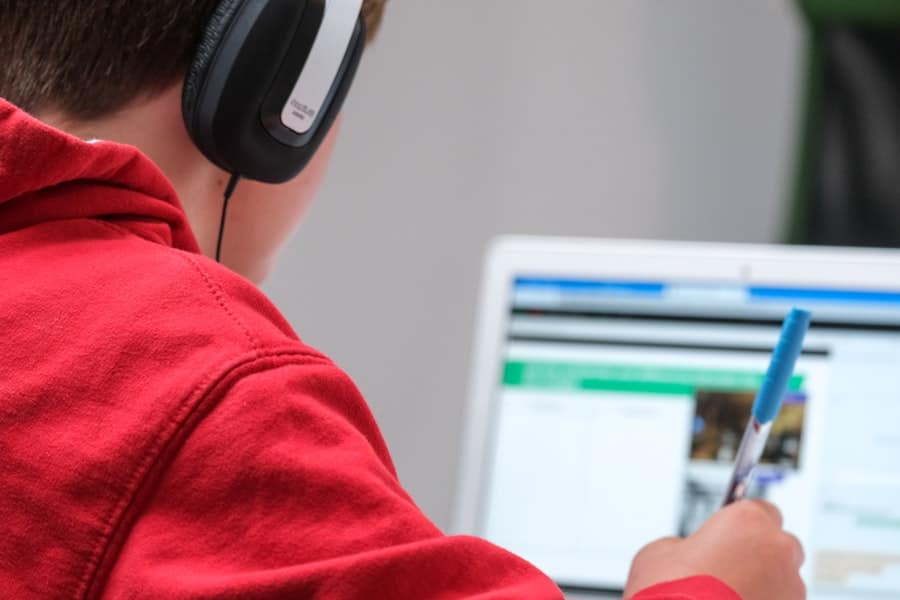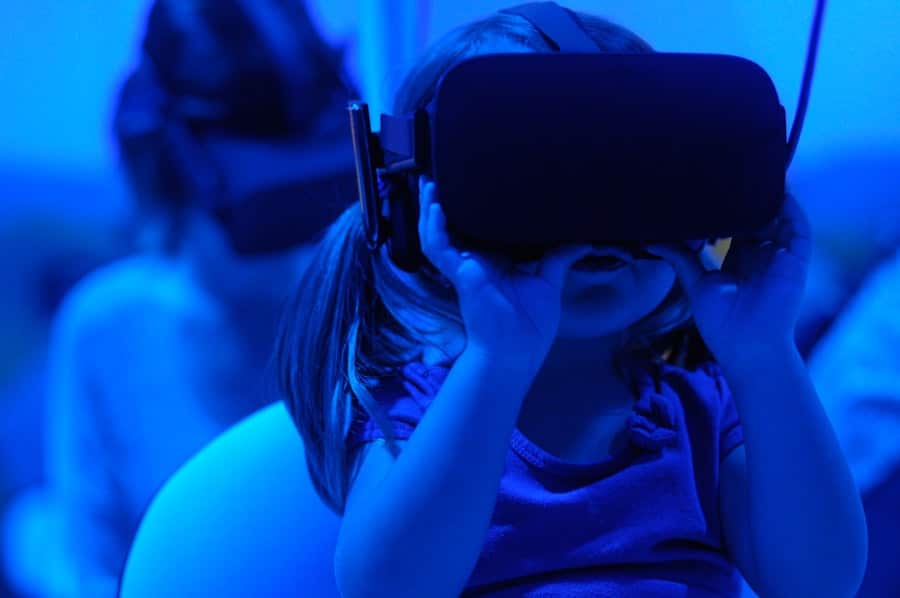In recent years, the global refugee crisis has reached unprecedented levels, with millions of individuals and families displaced due to conflict, persecution, and environmental disasters. Among these displaced populations, children and young adults face significant barriers to education, which is crucial for their development and integration into new societies. Educational technology (EdTech) has emerged as a powerful tool to bridge these gaps, offering innovative solutions that cater specifically to the needs of refugee and migrant learners.
By leveraging digital platforms, mobile applications, and online resources, EdTech can provide access to quality education, facilitate language acquisition, and foster social connections among learners from diverse backgrounds. The potential of EdTech solutions extends beyond mere access to educational content; they can also empower learners by providing personalized learning experiences tailored to individual needs. For instance, adaptive learning technologies can assess a learner’s proficiency level and adjust the curriculum accordingly, ensuring that each student progresses at their own pace.
Furthermore, EdTech can help create inclusive learning environments that respect and celebrate cultural diversity, allowing refugee and migrant learners to feel valued and understood in their educational journeys. As we explore the various dimensions of EdTech solutions for these vulnerable populations, it becomes evident that technology can play a transformative role in reshaping their educational experiences.
Key Takeaways
- EdTech solutions play a crucial role in providing education access to refugee and migrant learners.
- EdTech has the potential to overcome barriers to education such as language and literacy challenges for refugee and migrant learners.
- Successful case studies demonstrate the positive impact of EdTech programs on the education of refugee and migrant learners.
- Challenges in implementing EdTech solutions for refugee and migrant learners include access to technology and internet, as well as cultural and language barriers.
- Culturally relevant and inclusive EdTech solutions are essential for effectively supporting the diverse needs of refugee and migrant learners.
The Impact of EdTech on Access to Education for Refugee and Migrant Learners
EdTech has significantly transformed the landscape of education for refugee and migrant learners by enhancing access to learning resources that were previously out of reach. Traditional educational systems often struggle to accommodate the unique needs of these students due to language barriers, trauma, and disrupted schooling. However, digital platforms can provide flexible learning opportunities that transcend geographical limitations.
For example, online courses and virtual classrooms enable learners to engage with educational content from anywhere, whether they are in a refugee camp or a new urban environment. Moreover, EdTech solutions can facilitate asynchronous learning, allowing students to study at their own convenience. This flexibility is particularly beneficial for refugee and migrant learners who may have varying schedules due to family responsibilities or work commitments.
Mobile applications designed for language learning, such as Duolingo or Babbel, offer bite-sized lessons that can be accessed on smartphones, making it easier for learners to practice language skills in their own time. By breaking down barriers to access, EdTech not only democratizes education but also empowers refugee and migrant learners to take charge of their own learning journeys.
Case Studies of Successful EdTech Programs for Refugee and Migrant Learners
Several successful EdTech initiatives have emerged globally, demonstrating the potential of technology to support refugee and migrant learners effectively. One notable example is the “Khan Academy” program, which has been adapted for use in refugee camps. In Jordan’s Zaatari refugee camp, Khan Academy provides free online courses in subjects ranging from mathematics to science.
The platform’s interactive features allow students to learn at their own pace while receiving instant feedback on their progress. This initiative has not only improved academic performance but has also instilled a sense of hope and agency among young refugees. Another compelling case is the “Refugee Education Accelerator,” a program launched by the United Nations High Commissioner for Refugees (UNHCR) in collaboration with various EdTech companies.
This initiative aims to develop scalable digital solutions tailored specifically for refugee education. One of its projects includes the “Learn with Refugees” platform, which connects volunteer educators with refugee students through online tutoring sessions. This model not only provides academic support but also fosters meaningful relationships between tutors and learners, helping to alleviate feelings of isolation among refugees.
Challenges and Limitations of Implementing EdTech Solutions for Refugee and Migrant Learners
Despite the promising potential of EdTech solutions for refugee and migrant learners, several challenges hinder their effective implementation. One significant barrier is the lack of reliable internet access in many refugee camps and low-income urban areas where migrants reside. Without stable connectivity, learners cannot fully engage with online resources or participate in virtual classrooms.
This digital divide exacerbates existing inequalities in education and limits the reach of EdTech initiatives. Additionally, cultural differences and varying educational backgrounds can pose challenges in the design and delivery of EdTech programs.
Furthermore, there is often a lack of training for educators on how to effectively integrate technology into their teaching practices. Without proper support and professional development, teachers may struggle to utilize EdTech tools effectively, undermining the potential benefits for their students.
The Role of EdTech in Providing Language and Literacy Support for Refugee and Migrant Learners
Language acquisition is a critical component of educational success for refugee and migrant learners. Many face significant challenges in mastering the language of their host country, which can hinder their ability to engage with academic content and integrate into society. EdTech offers innovative solutions that can enhance language learning through interactive platforms that promote engagement and practice.
For instance, language learning apps like Rosetta Stone or Memrise utilize gamification techniques to make learning enjoyable while providing immediate feedback on pronunciation and vocabulary usage. Moreover, EdTech can facilitate peer-to-peer language exchange programs where learners can practice speaking with native speakers through video calls or chat platforms. These interactions not only improve language skills but also foster cultural exchange and understanding between communities.
Additionally, digital storytelling tools enable refugee learners to express themselves creatively while developing their literacy skills. By sharing their stories through multimedia presentations or blogs, they can build confidence in their language abilities while connecting with others who share similar experiences.
The Importance of Culturally Relevant and Inclusive EdTech Solutions for Refugee and Migrant Learners
Culturally relevant pedagogy is essential when designing EdTech solutions for refugee and migrant learners. These students often come from rich cultural backgrounds that should be acknowledged and integrated into their learning experiences. Culturally responsive EdTech tools can help create an inclusive environment where learners feel represented and valued.
For example, educational content that reflects diverse cultures, histories, and perspectives can foster a sense of belonging among students. Furthermore, inclusive design principles should guide the development of EdTech solutions to ensure accessibility for all learners, including those with disabilities or special needs. This may involve incorporating features such as text-to-speech functionality or adjustable font sizes in digital platforms.
By prioritizing inclusivity in EdTech design, developers can create resources that cater to the diverse needs of refugee and migrant learners while promoting equity in education.
Collaboration and Partnerships in Developing and Implementing EdTech Solutions for Refugee and Migrant Learners
The successful implementation of EdTech solutions for refugee and migrant learners often relies on collaboration among various stakeholders, including governments, non-profit organizations, educational institutions, and technology companies. Partnerships can facilitate resource sharing, knowledge exchange, and capacity building among organizations working towards common goals in education. For instance, collaborations between local schools and NGOs can help identify the specific needs of refugee students while providing tailored support through technology.
Moreover, engaging with refugee communities themselves is crucial in developing effective EdTech solutions. By involving learners in the design process through focus groups or surveys, developers can gain valuable insights into their preferences and challenges. This participatory approach ensures that the resulting tools are relevant and user-friendly while fostering a sense of ownership among users.
The Future of EdTech in Supporting Refugee and Migrant Learners
As technology continues to evolve rapidly, the future of EdTech holds immense promise for supporting refugee and migrant learners. Innovations such as artificial intelligence (AI) and machine learning are poised to enhance personalized learning experiences further by analyzing individual progress data to tailor educational content dynamically. Additionally, advancements in virtual reality (VR) could provide immersive learning experiences that allow students to explore new environments or historical events interactively.
Furthermore, as global awareness of the challenges faced by refugees grows, there is an increasing emphasis on developing sustainable EdTech solutions that prioritize long-term impact over short-term fixes. This shift towards sustainability will require ongoing investment in infrastructure, training for educators, and continuous evaluation of program effectiveness. By harnessing the power of technology while remaining attuned to the unique needs of refugee and migrant learners, we can create a more equitable educational landscape that empowers these individuals to thrive in their new communities.
A related article discussing the best free software for 3D modeling in 2023 can be found here. This article explores the various tools available for creating 3D models, which can be a valuable skill for refugee and migrant learners looking to enter the field of design or animation. By utilizing these free software options, individuals can enhance their digital skills and potentially open up new career opportunities.
FAQs
What are EdTech solutions?
EdTech solutions are educational technologies that aim to enhance teaching and learning experiences through the use of digital tools, platforms, and resources.
How are EdTech solutions supporting refugee and migrant learners?
EdTech solutions are supporting refugee and migrant learners by providing access to quality education, language learning resources, and skills training through online platforms and digital tools. These solutions help bridge the gap in education for displaced populations and provide opportunities for learning and skill development.
What types of EdTech solutions are available for refugee and migrant learners?
There are various types of EdTech solutions available for refugee and migrant learners, including online language learning programs, virtual classrooms, educational apps, digital libraries, and skills training platforms. These solutions cater to different learning needs and provide flexible and accessible learning opportunities for displaced populations.
What are the benefits of using EdTech solutions for refugee and migrant learners?
The benefits of using EdTech solutions for refugee and migrant learners include increased access to education, language learning support, skill development opportunities, flexibility in learning schedules, and the ability to connect with educators and peers from around the world. These solutions also help empower displaced populations to pursue educational and career goals despite their circumstances.
How can organizations and educators implement EdTech solutions for refugee and migrant learners?
Organizations and educators can implement EdTech solutions for refugee and migrant learners by partnering with tech companies, leveraging existing online platforms and resources, providing training and support for learners to use digital tools, and creating tailored educational programs that address the specific needs of displaced populations. It is important to consider the availability of technology and internet access for the target audience when implementing EdTech solutions.



